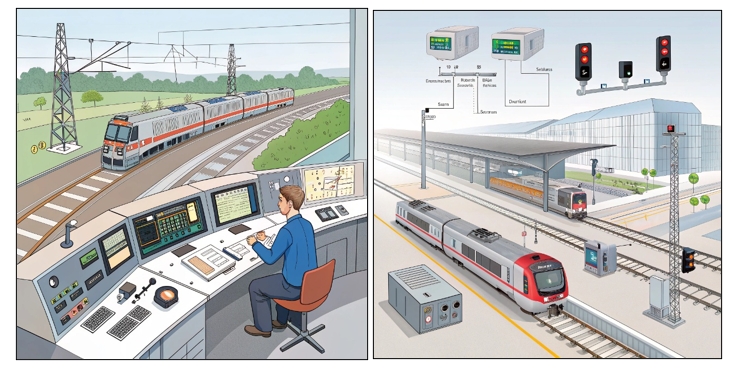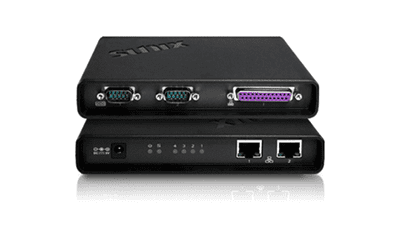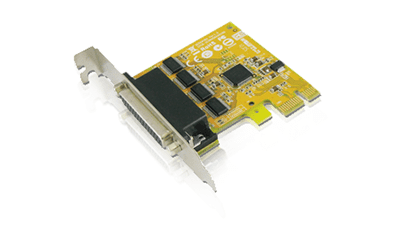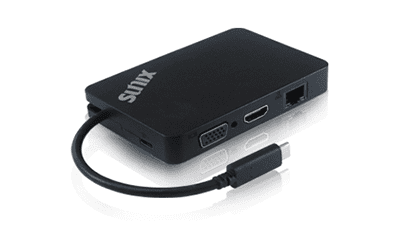SUNIX CAN FD Communication Card in Railway Transportation Applications
SUNIX CAN FD Communication Card in Railway Transportation Applications
1. Introduction
As railway transportation systems evolve toward intelligence, automation, and modularization, onboard communication interfaces face higher demands for data density and real-time performance. CAN FD (Flexible Data-rate) technology, with its high-speed transmission, strong anti-interference capability, and backward compatibility, has become the ideal choice for next-generation vehicle communication. SUNIX’s industrial-grade PCIe CAN FD expansion card, CAN-E2102SI, features high stability, dual channels, and isolation protection, making it suitable for deployment in railway vehicle controllers, maintenance diagnostic equipment, and signal control systems.
2. Technical Background: CAN FD and Railway Communication Requirements
| Item | Traditional CAN | CAN FD |
|---|---|---|
| Maximum Data Length | 8 bytes | 64 bytes |
| Data Rate | 1 Mbps | Up to 8 Mbps |
| Bitrate Flexibility | Fixed | Variable rate in data phase |
| Backward Compatibility | CAN only | Fully compatible with CAN |
| Application Scenarios | Basic module communication | High-frequency sensing, diagnostics, control modules |
3. Product Introduction: SUNIX CAN-E2102SI Expansion Card
| Specification | Details |
|---|---|
| Interface | PCI Express Gen2 x1 |
| Number of Channels | 2-channel CAN FD |
| Data Rate | Up to 8 Mbit/s |
| Isolation Protection | 2.5KV per channel |
| Surge Protection | 2KV |
| Software Support | Windows 10/11, Linux SocketCAN |
| Application Scenarios | Railway systems, smart logistics, smart healthcare, smart manufacturing |
| Certifications | CE / FCC / VCCI / BSMI |
4. Application Scenario Analysis
1. Onboard Module Communication Integration
- Controls modules such as doors, air conditioning, lighting, and displays.
- CAN FD enables high-speed data synchronization and real-time inter-module communication.
2. Maintenance Diagnostics and Firmware Updates
- Works with laptops or industrial PCs for ECU diagnostics and flashing.
- Supports protocols such as UDS and XCP to improve maintenance efficiency.

3. Signal Control and Switch Management
- Controls devices such as signal lights, switches, and sensors.
- CAN FD enhances communication stability and response speed.

4. Train-to-Ground Communication Integration
- Exchanges status and maintenance data with ground systems when the train arrives at the station.
- CAN FD serves as the internal module bus, supporting real-time data integration.

5. Recommended Deployment Architecture

6. Technical Advantages and Benefit Analysis
| Indicator | CAN | CAN FD (SUNIX) | Actual Benefits |
|---|---|---|---|
| Data Transmission Efficiency | Low | High (64 bytes/frame) | Reduces communication latency and improves task response speed |
| System Scalability | Limited | High | Supports multi-module parallel operations |
| Fault Tolerance and Stability | Normal | Excellent | Reduces communication error rates and enhances reliability |
| Integration Cost | High | Medium | Coexists with existing CAN devices, lowering upgrade costs |
| Development Support | Weak | Comprehensive (SDK/API) | Accelerates system integration and deployment |
Benefit Summary
| Benefit Type | Description |
|---|---|
| Communication Efficiency | Increased data per frame reduces polling frequency |
| System Stability | Enhanced error checking and isolation improve reliability |
| Architecture Scalability | Supports multi-module expansion and complex topology designs |
| Maintenance Convenience | Supports diagnostic protocols and firmware updates, simplifying maintenance |
| Cost Effectiveness | Reduces wiring and integration costs |
7. Conclusion
The SUNIX CAN FD expansion card not only meets the high-speed and stable communication demands of railway transportation systems but also offers industrial-grade design and multi-system compatibility. In the future, it can be further integrated with AI edge analytics and IoT sensors to create an intelligent train communication platform that enhances overall transportation efficiency and safety.
Articles
Use Cases
-
Hailo8 Application – Face Recognition
-
Hailo8 Application – ReID
-
Applications of SUNIX CAN FD Communication Card in Smart Manufacturing
-
SUNIX CAN FD Communication Card in Railway Transportation Applications
-
SUNIX CAN FD Communication Card in MRI Applications
-
External Storage System Application High-Performance Architecture Based on SUNIX OCuLink Expansion Card
-
UPB2430 USB4 Daisy Chain Application: Unlocking a High-Performance Chaining Experience
-
Application of SUNIX CAN FD Communication Card in Smart Mobile Robots (AGV/AMR)
-
Application of SUNIX CAN FD Card in Automotive Repair Station Diagnostic Systems
-
SUNIX CAN FD Card in Modular Energy Storage Systems
-
Applications and Benefits of CAN FD in Automotive Service Station Diagnostic Systems
-
Application of CAN FD in Electric Vehicle Battery Management Systems
-
CANbus Will Play Critical Role in Electric and Autonomous Vehicles by OEM OFF-HIGHWAY
SUNIX CAN FD Communication Card in Railway Transportation Applications
SUNIX CAN FD Communication Card in Railway Transportation Applications
1. Introduction
As railway transportation systems evolve toward intelligence, automation, and modularization, onboard communication interfaces face higher demands for data density and real-time performance. CAN FD (Flexible Data-rate) technology, with its high-speed transmission, strong anti-interference capability, and backward compatibility, has become the ideal choice for next-generation vehicle communication. SUNIX’s industrial-grade PCIe CAN FD expansion card, CAN-E2102SI, features high stability, dual channels, and isolation protection, making it suitable for deployment in railway vehicle controllers, maintenance diagnostic equipment, and signal control systems.
2. Technical Background: CAN FD and Railway Communication Requirements
| Item | Traditional CAN | CAN FD |
|---|---|---|
| Maximum Data Length | 8 bytes | 64 bytes |
| Data Rate | 1 Mbps | Up to 8 Mbps |
| Bitrate Flexibility | Fixed | Variable rate in data phase |
| Backward Compatibility | CAN only | Fully compatible with CAN |
| Application Scenarios | Basic module communication | High-frequency sensing, diagnostics, control modules |
3. Product Introduction: SUNIX CAN-E2102SI Expansion Card
| Specification | Details |
|---|---|
| Interface | PCI Express Gen2 x1 |
| Number of Channels | 2-channel CAN FD |
| Data Rate | Up to 8 Mbit/s |
| Isolation Protection | 2.5KV per channel |
| Surge Protection | 2KV |
| Software Support | Windows 10/11, Linux SocketCAN |
| Application Scenarios | Railway systems, smart logistics, smart healthcare, smart manufacturing |
| Certifications | CE / FCC / VCCI / BSMI |
4. Application Scenario Analysis
1. Onboard Module Communication Integration
- Controls modules such as doors, air conditioning, lighting, and displays.
- CAN FD enables high-speed data synchronization and real-time inter-module communication.
2. Maintenance Diagnostics and Firmware Updates
- Works with laptops or industrial PCs for ECU diagnostics and flashing.
- Supports protocols such as UDS and XCP to improve maintenance efficiency.

3. Signal Control and Switch Management
- Controls devices such as signal lights, switches, and sensors.
- CAN FD enhances communication stability and response speed.

4. Train-to-Ground Communication Integration
- Exchanges status and maintenance data with ground systems when the train arrives at the station.
- CAN FD serves as the internal module bus, supporting real-time data integration.

5. Recommended Deployment Architecture

6. Technical Advantages and Benefit Analysis
| Indicator | CAN | CAN FD (SUNIX) | Actual Benefits |
|---|---|---|---|
| Data Transmission Efficiency | Low | High (64 bytes/frame) | Reduces communication latency and improves task response speed |
| System Scalability | Limited | High | Supports multi-module parallel operations |
| Fault Tolerance and Stability | Normal | Excellent | Reduces communication error rates and enhances reliability |
| Integration Cost | High | Medium | Coexists with existing CAN devices, lowering upgrade costs |
| Development Support | Weak | Comprehensive (SDK/API) | Accelerates system integration and deployment |
Benefit Summary
| Benefit Type | Description |
|---|---|
| Communication Efficiency | Increased data per frame reduces polling frequency |
| System Stability | Enhanced error checking and isolation improve reliability |
| Architecture Scalability | Supports multi-module expansion and complex topology designs |
| Maintenance Convenience | Supports diagnostic protocols and firmware updates, simplifying maintenance |
| Cost Effectiveness | Reduces wiring and integration costs |
7. Conclusion
The SUNIX CAN FD expansion card not only meets the high-speed and stable communication demands of railway transportation systems but also offers industrial-grade design and multi-system compatibility. In the future, it can be further integrated with AI edge analytics and IoT sensors to create an intelligent train communication platform that enhances overall transportation efficiency and safety.
Articles
Use Cases
-
Hailo8 Application – Face Recognition
-
Hailo8 Application – ReID
-
Applications of SUNIX CAN FD Communication Card in Smart Manufacturing
-
SUNIX CAN FD Communication Card in Railway Transportation Applications
-
SUNIX CAN FD Communication Card in MRI Applications
-
External Storage System Application High-Performance Architecture Based on SUNIX OCuLink Expansion Card
-
UPB2430 USB4 Daisy Chain Application: Unlocking a High-Performance Chaining Experience
-
Application of SUNIX CAN FD Communication Card in Smart Mobile Robots (AGV/AMR)
-
Application of SUNIX CAN FD Card in Automotive Repair Station Diagnostic Systems
-
SUNIX CAN FD Card in Modular Energy Storage Systems
-
Applications and Benefits of CAN FD in Automotive Service Station Diagnostic Systems
-
Application of CAN FD in Electric Vehicle Battery Management Systems
-
CANbus Will Play Critical Role in Electric and Autonomous Vehicles by OEM OFF-HIGHWAY
SUNIX CAN FD Communication Card in Railway Transportation Applications
SUNIX CAN FD Communication Card in Railway Transportation Applications
1. Introduction
As railway transportation systems evolve toward intelligence, automation, and modularization, onboard communication interfaces face higher demands for data density and real-time performance. CAN FD (Flexible Data-rate) technology, with its high-speed transmission, strong anti-interference capability, and backward compatibility, has become the ideal choice for next-generation vehicle communication. SUNIX’s industrial-grade PCIe CAN FD expansion card, CAN-E2102SI, features high stability, dual channels, and isolation protection, making it suitable for deployment in railway vehicle controllers, maintenance diagnostic equipment, and signal control systems.
2. Technical Background: CAN FD and Railway Communication Requirements
| Item | Traditional CAN | CAN FD |
|---|---|---|
| Maximum Data Length | 8 bytes | 64 bytes |
| Data Rate | 1 Mbps | Up to 8 Mbps |
| Bitrate Flexibility | Fixed | Variable rate in data phase |
| Backward Compatibility | CAN only | Fully compatible with CAN |
| Application Scenarios | Basic module communication | High-frequency sensing, diagnostics, control modules |
3. Product Introduction: SUNIX CAN-E2102SI Expansion Card
| Specification | Details |
|---|---|
| Interface | PCI Express Gen2 x1 |
| Number of Channels | 2-channel CAN FD |
| Data Rate | Up to 8 Mbit/s |
| Isolation Protection | 2.5KV per channel |
| Surge Protection | 2KV |
| Software Support | Windows 10/11, Linux SocketCAN |
| Application Scenarios | Railway systems, smart logistics, smart healthcare, smart manufacturing |
| Certifications | CE / FCC / VCCI / BSMI |
4. Application Scenario Analysis
1. Onboard Module Communication Integration
- Controls modules such as doors, air conditioning, lighting, and displays.
- CAN FD enables high-speed data synchronization and real-time inter-module communication.
2. Maintenance Diagnostics and Firmware Updates
- Works with laptops or industrial PCs for ECU diagnostics and flashing.
- Supports protocols such as UDS and XCP to improve maintenance efficiency.

3. Signal Control and Switch Management
- Controls devices such as signal lights, switches, and sensors.
- CAN FD enhances communication stability and response speed.

4. Train-to-Ground Communication Integration
- Exchanges status and maintenance data with ground systems when the train arrives at the station.
- CAN FD serves as the internal module bus, supporting real-time data integration.

5. Recommended Deployment Architecture

6. Technical Advantages and Benefit Analysis
| Indicator | CAN | CAN FD (SUNIX) | Actual Benefits |
|---|---|---|---|
| Data Transmission Efficiency | Low | High (64 bytes/frame) | Reduces communication latency and improves task response speed |
| System Scalability | Limited | High | Supports multi-module parallel operations |
| Fault Tolerance and Stability | Normal | Excellent | Reduces communication error rates and enhances reliability |
| Integration Cost | High | Medium | Coexists with existing CAN devices, lowering upgrade costs |
| Development Support | Weak | Comprehensive (SDK/API) | Accelerates system integration and deployment |
Benefit Summary
| Benefit Type | Description |
|---|---|
| Communication Efficiency | Increased data per frame reduces polling frequency |
| System Stability | Enhanced error checking and isolation improve reliability |
| Architecture Scalability | Supports multi-module expansion and complex topology designs |
| Maintenance Convenience | Supports diagnostic protocols and firmware updates, simplifying maintenance |
| Cost Effectiveness | Reduces wiring and integration costs |
7. Conclusion
The SUNIX CAN FD expansion card not only meets the high-speed and stable communication demands of railway transportation systems but also offers industrial-grade design and multi-system compatibility. In the future, it can be further integrated with AI edge analytics and IoT sensors to create an intelligent train communication platform that enhances overall transportation efficiency and safety.
Articles
Use Cases
-
Hailo8 Application – Face Recognition
-
Hailo8 Application – ReID
-
Applications of SUNIX CAN FD Communication Card in Smart Manufacturing
-
SUNIX CAN FD Communication Card in Railway Transportation Applications
-
SUNIX CAN FD Communication Card in MRI Applications
-
External Storage System Application High-Performance Architecture Based on SUNIX OCuLink Expansion Card
-
UPB2430 USB4 Daisy Chain Application: Unlocking a High-Performance Chaining Experience
-
Application of SUNIX CAN FD Communication Card in Smart Mobile Robots (AGV/AMR)
-
Application of SUNIX CAN FD Card in Automotive Repair Station Diagnostic Systems
-
SUNIX CAN FD Card in Modular Energy Storage Systems
-
Applications and Benefits of CAN FD in Automotive Service Station Diagnostic Systems
-
Application of CAN FD in Electric Vehicle Battery Management Systems
-
CANbus Will Play Critical Role in Electric and Autonomous Vehicles by OEM OFF-HIGHWAY
SUNIX CAN FD Communication Card in Railway Transportation Applications
SUNIX CAN FD Communication Card in Railway Transportation Applications
1. Introduction
As railway transportation systems evolve toward intelligence, automation, and modularization, onboard communication interfaces face higher demands for data density and real-time performance. CAN FD (Flexible Data-rate) technology, with its high-speed transmission, strong anti-interference capability, and backward compatibility, has become the ideal choice for next-generation vehicle communication. SUNIX’s industrial-grade PCIe CAN FD expansion card, CAN-E2102SI, features high stability, dual channels, and isolation protection, making it suitable for deployment in railway vehicle controllers, maintenance diagnostic equipment, and signal control systems.
2. Technical Background: CAN FD and Railway Communication Requirements
| Item | Traditional CAN | CAN FD |
|---|---|---|
| Maximum Data Length | 8 bytes | 64 bytes |
| Data Rate | 1 Mbps | Up to 8 Mbps |
| Bitrate Flexibility | Fixed | Variable rate in data phase |
| Backward Compatibility | CAN only | Fully compatible with CAN |
| Application Scenarios | Basic module communication | High-frequency sensing, diagnostics, control modules |
3. Product Introduction: SUNIX CAN-E2102SI Expansion Card
| Specification | Details |
|---|---|
| Interface | PCI Express Gen2 x1 |
| Number of Channels | 2-channel CAN FD |
| Data Rate | Up to 8 Mbit/s |
| Isolation Protection | 2.5KV per channel |
| Surge Protection | 2KV |
| Software Support | Windows 10/11, Linux SocketCAN |
| Application Scenarios | Railway systems, smart logistics, smart healthcare, smart manufacturing |
| Certifications | CE / FCC / VCCI / BSMI |
4. Application Scenario Analysis
1. Onboard Module Communication Integration
- Controls modules such as doors, air conditioning, lighting, and displays.
- CAN FD enables high-speed data synchronization and real-time inter-module communication.
2. Maintenance Diagnostics and Firmware Updates
- Works with laptops or industrial PCs for ECU diagnostics and flashing.
- Supports protocols such as UDS and XCP to improve maintenance efficiency.

3. Signal Control and Switch Management
- Controls devices such as signal lights, switches, and sensors.
- CAN FD enhances communication stability and response speed.

4. Train-to-Ground Communication Integration
- Exchanges status and maintenance data with ground systems when the train arrives at the station.
- CAN FD serves as the internal module bus, supporting real-time data integration.

5. Recommended Deployment Architecture

6. Technical Advantages and Benefit Analysis
| Indicator | CAN | CAN FD (SUNIX) | Actual Benefits |
|---|---|---|---|
| Data Transmission Efficiency | Low | High (64 bytes/frame) | Reduces communication latency and improves task response speed |
| System Scalability | Limited | High | Supports multi-module parallel operations |
| Fault Tolerance and Stability | Normal | Excellent | Reduces communication error rates and enhances reliability |
| Integration Cost | High | Medium | Coexists with existing CAN devices, lowering upgrade costs |
| Development Support | Weak | Comprehensive (SDK/API) | Accelerates system integration and deployment |
Benefit Summary
| Benefit Type | Description |
|---|---|
| Communication Efficiency | Increased data per frame reduces polling frequency |
| System Stability | Enhanced error checking and isolation improve reliability |
| Architecture Scalability | Supports multi-module expansion and complex topology designs |
| Maintenance Convenience | Supports diagnostic protocols and firmware updates, simplifying maintenance |
| Cost Effectiveness | Reduces wiring and integration costs |
7. Conclusion
The SUNIX CAN FD expansion card not only meets the high-speed and stable communication demands of railway transportation systems but also offers industrial-grade design and multi-system compatibility. In the future, it can be further integrated with AI edge analytics and IoT sensors to create an intelligent train communication platform that enhances overall transportation efficiency and safety.
Articles
Use Cases
-
Hailo8 Application – Face Recognition
-
Hailo8 Application – ReID
-
Applications of SUNIX CAN FD Communication Card in Smart Manufacturing
-
SUNIX CAN FD Communication Card in Railway Transportation Applications
-
SUNIX CAN FD Communication Card in MRI Applications
-
External Storage System Application High-Performance Architecture Based on SUNIX OCuLink Expansion Card
-
UPB2430 USB4 Daisy Chain Application: Unlocking a High-Performance Chaining Experience
-
Application of SUNIX CAN FD Communication Card in Smart Mobile Robots (AGV/AMR)
-
Application of SUNIX CAN FD Card in Automotive Repair Station Diagnostic Systems
-
SUNIX CAN FD Card in Modular Energy Storage Systems
-
Applications and Benefits of CAN FD in Automotive Service Station Diagnostic Systems
-
Application of CAN FD in Electric Vehicle Battery Management Systems
-
CANbus Will Play Critical Role in Electric and Autonomous Vehicles by OEM OFF-HIGHWAY









